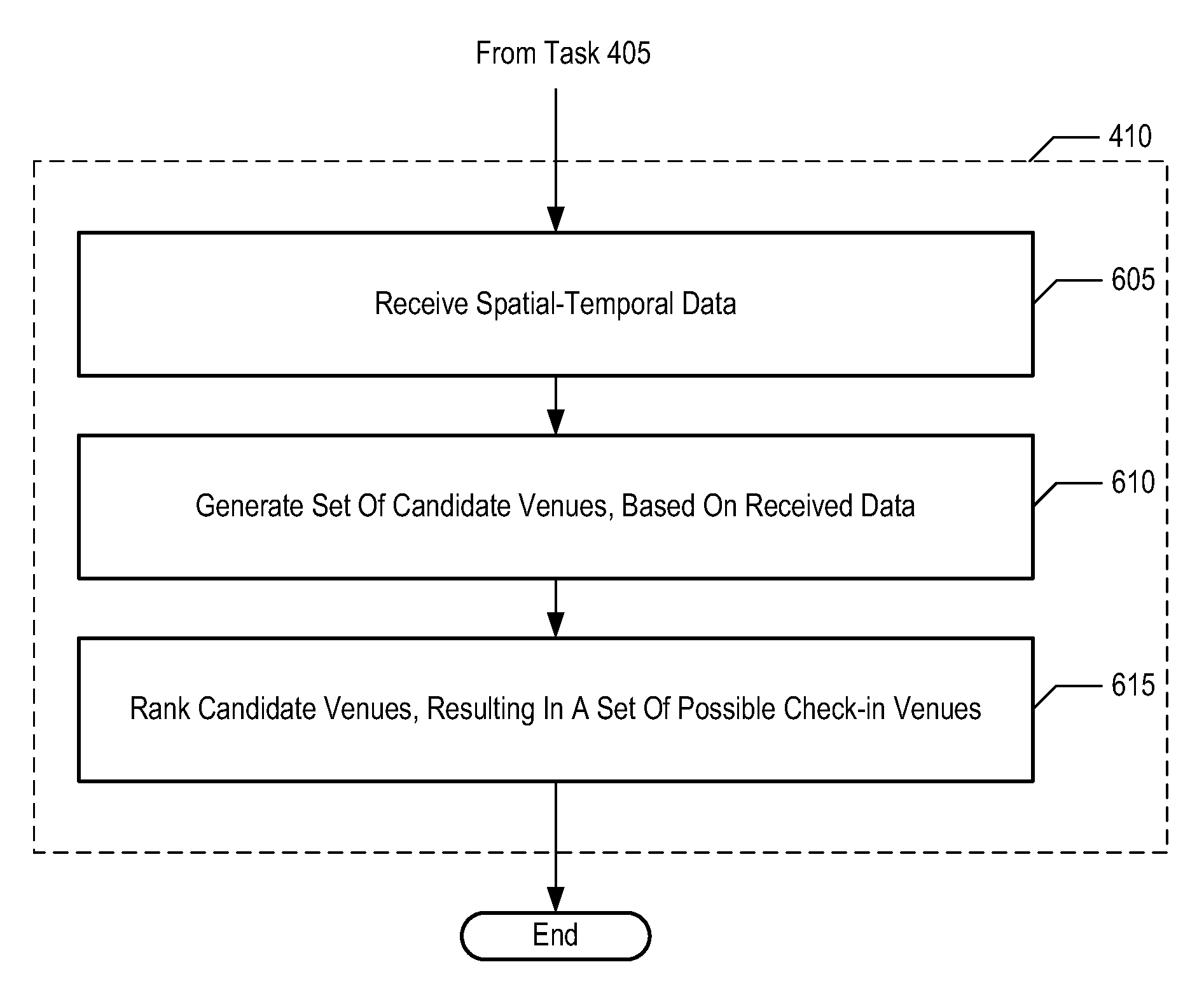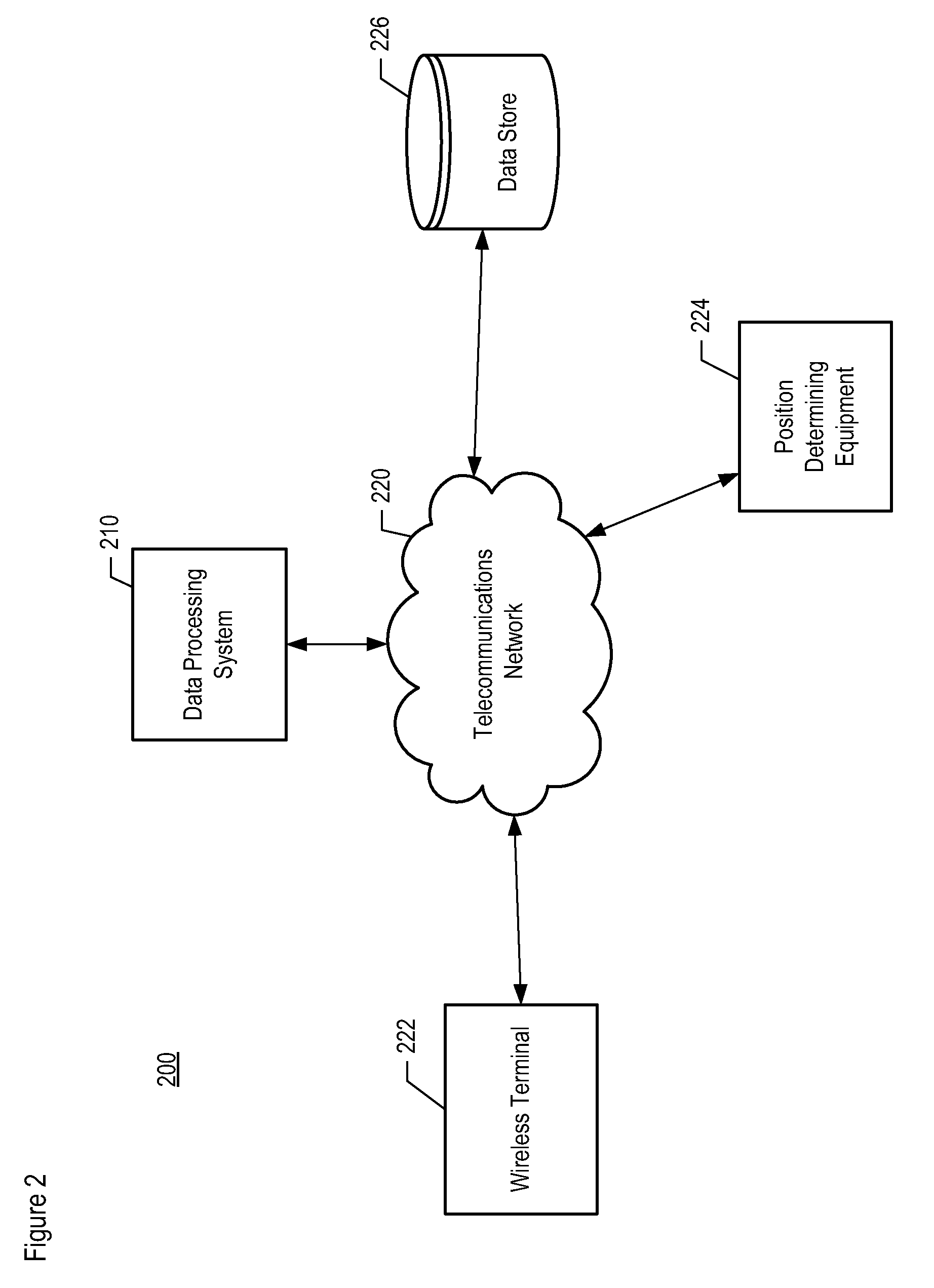Venue prediction based on ranking
a ranking and venue technology, applied in relational databases, database models, instruments, etc., can solve problems such as city areas, reliability problems, and grossly inaccurate geolocation of users
- Summary
- Abstract
- Description
- Claims
- Application Information
AI Technical Summary
Benefits of technology
Problems solved by technology
Method used
Image
Examples
Embodiment Construction
[0033]The following terms are defined for use in this Specification, including the appended claims:[0034]The term “location” is defined as a zero-dimensional point, a finite one-dimensional path segment, a finite two-dimensional surface area, or a finite three-dimensional volume.[0035]The term “venue,” and its inflected forms, is defined as a place that can be visited by one or more users. A user might choose to identify explicitly that he is visiting a particular venue by sending a “check-in.”[0036]The term “calendrical time T” is defined as the time as denominated in one or more measures (e.g., seconds, minutes, hours, time of day, day, day of week, month, month of year, year, etc.).[0037]The term “wireless terminal” is defined as a wireless telecommunications terminal that is capable of transmitting and / or receiving communications wirelessly. As is well known to those skilled in the art, a wireless terminal is also commonly referred to by a variety of alternative names such as a ...
PUM
 Login to View More
Login to View More Abstract
Description
Claims
Application Information
 Login to View More
Login to View More - R&D
- Intellectual Property
- Life Sciences
- Materials
- Tech Scout
- Unparalleled Data Quality
- Higher Quality Content
- 60% Fewer Hallucinations
Browse by: Latest US Patents, China's latest patents, Technical Efficacy Thesaurus, Application Domain, Technology Topic, Popular Technical Reports.
© 2025 PatSnap. All rights reserved.Legal|Privacy policy|Modern Slavery Act Transparency Statement|Sitemap|About US| Contact US: help@patsnap.com



